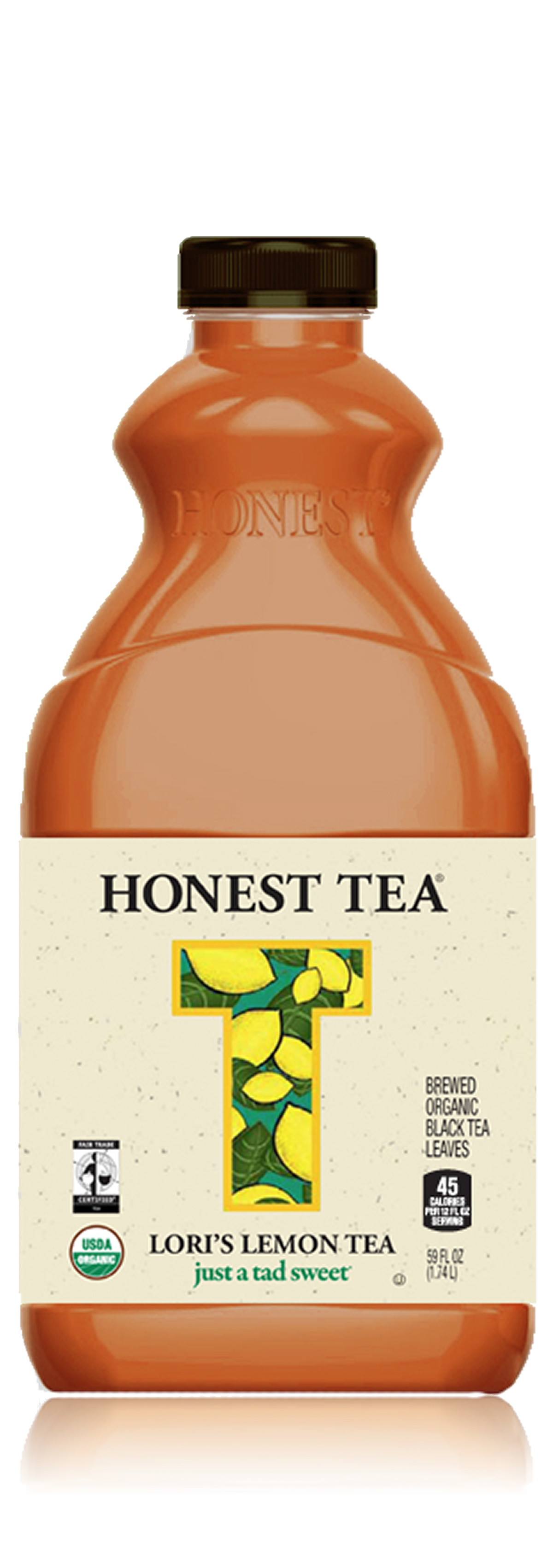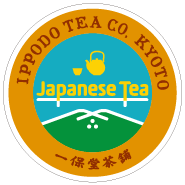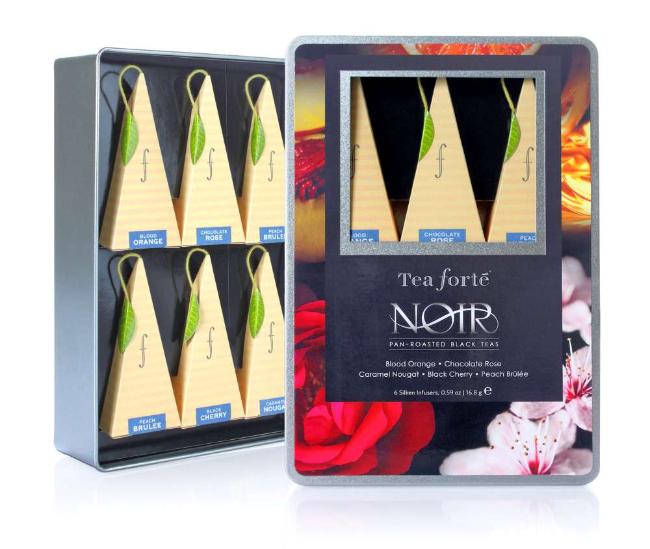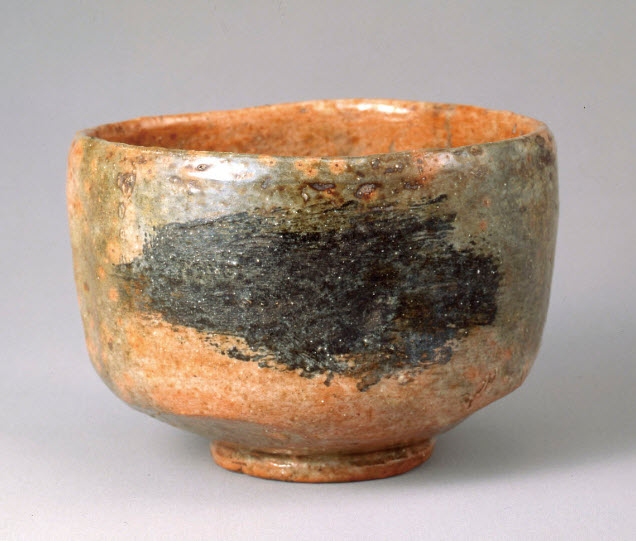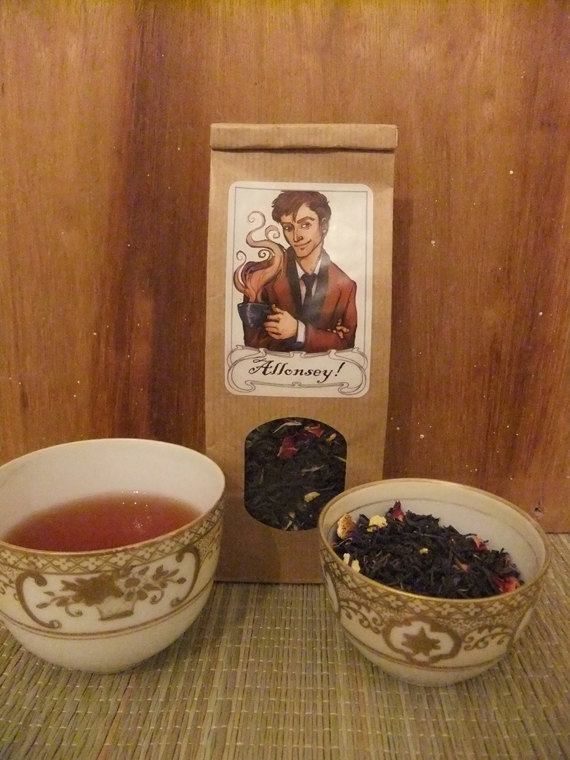What tea professionals need to start the week.
Look for a Downton Abbey tea truck roaming the streets of New York City this week… the Canadian government is appealing a B.C. Supreme Court decision that allows patients authorized to use medical marijuana to make hemp tea or bake it in their brownies… Watch a hilariously but aptly titled video report Pimp My Tea on Chinese TV… Check out the Immerset, a bottom-dispensing brewer with a valve in the base… The $40,000 Turner prize for art goes to a French woman who created an installation of tea cups with buttocks currently featured at one of England’s top museums… The 121-year-old Wagh Bakri Tea Group intends to expand from distribution of packaged tea to ownership of plantations in Assam…
Retail
 The drama Downton Abbey on PBS is certainly drawing attention to tea with manufacturers like Republic of Tea creating blends suited to the manor. To attract interest for the upcoming Season 4 a food van will traverse New York City offering free tea and biscuits to fans.
The drama Downton Abbey on PBS is certainly drawing attention to tea with manufacturers like Republic of Tea creating blends suited to the manor. To attract interest for the upcoming Season 4 a food van will traverse New York City offering free tea and biscuits to fans.
The van is equipped with a backdrop of Highclere Castle for photo enthusiasts. To discover its whereabouts visit @PBS on Twitter and follow the hashtag #TeaTruck. Stops are planned from 11 a.m. to 7 p.m. through Dec. 13. Click here for a schedule.
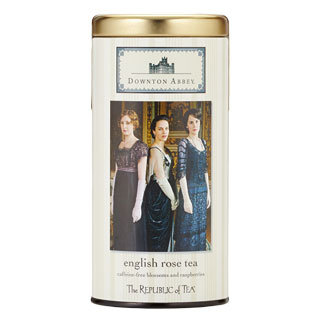 The cast of the hit British series — the most-watched drama in PBS history — also will be in Gotham next week for media appearances, a VIP screening and a Dec. 12 standing-room-only fan event at The Times Center that will include a panel discussion with exec producers Julian Fellowes and Gareth Neame.
The cast of the hit British series — the most-watched drama in PBS history — also will be in Gotham next week for media appearances, a VIP screening and a Dec. 12 standing-room-only fan event at The Times Center that will include a panel discussion with exec producers Julian Fellowes and Gareth Neame.
Source: Variety
Pimp My Tea
China’s CCTV assigned a reporter to visit Los Angeles last week to describe the tea industry in America.
The serious video report, hilariously but aptly titled Pimp My Tea, includes an interview with International Tea Importer (ITI, Inc.) and Chado Tea Room Founder Devan Shah, a visit to the American Tea Room in Beverly Hills and conversations with tea drinkers.
In America “the tea is infused with all sorts of interesting flavors” explains the reporter as the camera pans pouches labeled Macaroon (cacao bits, rooibos, coconut, licorice) and Toasted Fig (pu-erh, figs, dandelion roots, coconut flakes and fennel) or Brioche, advertised as “aromatic as a French patisserie” with almonds, cinnamon and safflower blossoms.
To a purist, concoctions like Chamomile Lemon and Dry Desert lime seem quite ordinary beside Carrot Curry and Beef Cabbage, Spinach Chive and Broccoli Cilantro “tea.” The blends described above no doubt appear to the Chinese exactly like the garish, gaudy and extravagant embellishments gangbangers use to transform 1970s caddies, a vintage Ford Fairlane or Lincoln Continental into pimpmobiles.
The Chinese treasure several blends such as Jasmine green tea but for the most part consumers there seem content with tea processed much as it was a 1000 years ago. In America the blends featured in most shops were developed within a few months of launch. They appear and disappear with the season.
Source: CCTV Culture Express
Innovation
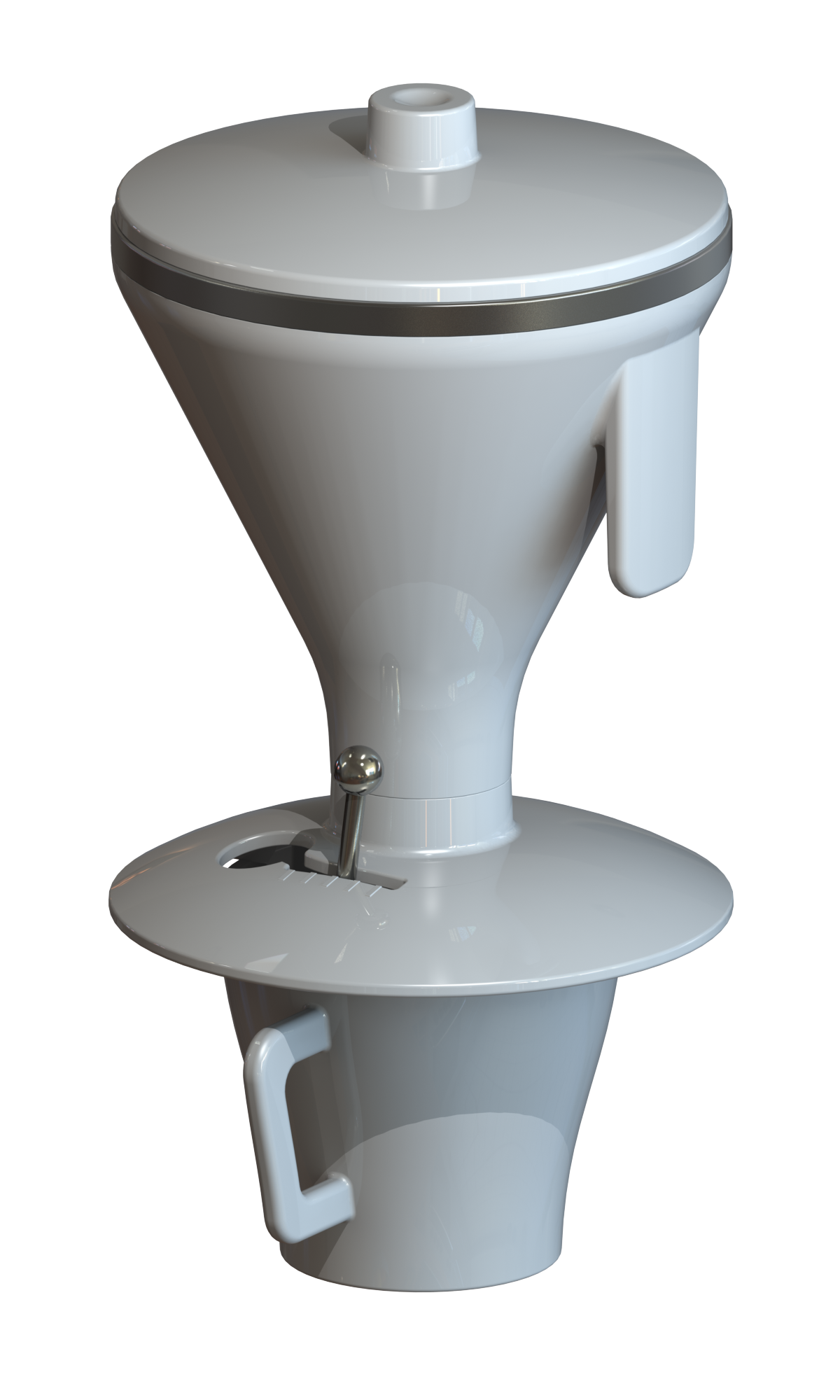 Brewing methods continue to evolve at both extremes. Last month I wrote about semi-automated $6,000 brewers ideally suited to coffee shop drive-thrus that can make multiple cups of tea in less than 90 seconds.
Brewing methods continue to evolve at both extremes. Last month I wrote about semi-automated $6,000 brewers ideally suited to coffee shop drive-thrus that can make multiple cups of tea in less than 90 seconds.
Immerset is at the other extreme, a simple invention that combines the gentle immersion of a French press with the control of pour over.
Inventor Chic Kelty enjoys both coffee and tea. He has several award-winning designs for products from portafilters and espresso machines to tampers. I still use his nifty silicone basket to catch the coffee grounds in my French press.
Instead of specialized brewers for each beverage, why not a single brewer with maximum versatility? he asked. Steeping ground coffee and tea leaves are similar but hardly the same. The secret to the Immerset is a valve he built into the base to control the flow of liquid.
Kelty told me that the patented helical valve design allows for intuitive and simple refinement of technique. Kelty’s design is perfect for loose-leaf tea as it allows the water to drain completely between cups to avoid bitterness.
The Immerset debuted on Kickstarter last week and is already partly funded by more than 100 enthusiasts with a month until the funding deadline.
Unlike many coffee brewing devices, hidden surfaces and niches have been eliminated to ensure the most hygienic function possible, said Kelty. “The entire water chamber and passage is sheathed in food-grade stainless steel so there is no hot-water-on-plastic contamination,” he said.
In making coffee controlling the grind density, flow rate and immersion time can be difficult but all three are essential to a great cup.
As Kelty explains, “with French press brewing, the barista is able to control the steeping duration but the system is intolerant of variability in grind density which limits the brew options and results in less dynamic flavor. “ In addition, prolonged immersion of the coffee between cups can result in bitterness and degradation of flavor.
“In contrast, pour-overs and cold brew methods allow for finer grind which can achieve a more refined taste however it can be a complicated and time consuming task to finely tune the immersion time and consistently produce the desired outcome,” he said.
Other features include:
- Intuitive function with easily replicable technique
- Integrated insulating design that keeps the brew hot between servings
- Food-safe, impact resistant ABS for strength and insulation
- Tool-free assembly
- Silicon seals for leak-proof assembly
The Immerset offers maximum versatility by addressing several variables collectively with one device.
Learn more: Immerset
Cultivation
The Descanso Gardens located in the hills above Los Angeles are an extraordinary tribute to floral splendor. Among the most appealing of its annual events is the Camellia Festival, a celebration of the flowering beauty of Camelia sinensis and its close cousins. The camellias brighten the dull dry grass of the Southern California winter. This year Chado Tea Room instructor Jordan Essey will lead a walk and talk and host a tea ceremony at the end of the daylong event Feb. 8-9, 2014. The tea ceremony is Sunday only from 11 a.m. to 2 p.m. Years ago I was editor of the Glendale News-Press and lived near the gardens. Click to view the newspaper’s photo gallery of last year’s Camellia Festival. Should you wish to plant your own Camellias, consider Green Tea Plants, a Florida nursery that specializes in providing home gardeners with tea plants from which you can make tea.
Source: Descanso Gardens and Green Tea Plants
Health
The Canadian government will appeal a British Columbia Supreme Court decision that allows patients authorized to use medical marijuana to drink hemp tea or bake it in brownies.
The Vancouver Sun reports that Owen Smith, the former head baker for the dispensary Cannabis Buyers Club of Canada will seek to uphold his constitutional victory in April 2012 against Health Canada’s medical marijuana access regulations.
Smith successfully argued that consuming prescribed marijuana is less harmful than smoking the plant’s leaves. His attorney said the right of medical marijuana patients to medicate themselves with cannabis and cannabis derivatives should be protected by the Charter of Rights and Freedoms.
Justice Robert Johnston ruled that it was unconstitutional to restrict medical-marijuana patients to using dried pot. He gave Health Canada a year to respond to his ruling, a deadline that was later extended.
The newspaper reported that patients in B.C. have been able to make their own oils, butters, baked goods and lotions following the ruling. Since June, designated producers have also been able to supply patients with products made from cannabis extracts.
Source: Vancouver Sun and Times Colonist
Doctor Fined for Claiming Tea Cures Cancer
An Australian physician was fined $25,000 by the Australian Medical Board for telling patients that he could cure cancer with a special diet that included green tea supplements.
An account in the Medical Observer explains that Dr. William Barnes who practices in Perth, acted “improperly” and was banned from advertising unproven cancer treatments.
The advertisement claimed Dr. Barnes’ treatment comprised oral and/or intravenous administration of green tea polyphenols, genistein from soy beans, curcumin from turmeric, quercetin, vitamin C, selenium, “anti-cancer herbs”, and “mineral replacements” following hair analysis and a diet, the board said.
“He was also ordered to have any patients with cancer read a form stating that he supported “treatment provided by oncologists [including] chemotherapy and other drug therapy.”
The consent form states that the patient “understand[s] that there is no evidence that taking any of these substances or receiving the intravenously will cure my cancer or slow the progression of my cancer.”
The decision is likely to discourage other fake cancer claims and treatments and save lives.
Source: The Medical Observer
Origin
GUWAHATI, India — Packaged tea retailer Wagh Bakri Tea Group, one of India’s largest tea suppliers, announced it will acquire the first of several tea gardens next year.
Chairman and managing director Piyush Desai expects to purchase five to seven Assam estates by the end of 2015. The 121-year old brand, which is headquartered in Gujarat, distributes 30 million kilos of tea annually, most of it sourced in Assam.
Desai told the newspaper that acquiring plantations will offer greater control over quality and production. The company is also considering supplying coffee and expects to increase its three retail tea lounges. “We will add another 20 outlets, 10 each in Delhi and Mumbai,” he said.
Source: India Times
Whimsy
Jurors for the coveted Turner prize for art selected a tea table as the winning installation.
Artist Laure Prouvost built a cabin for her fictional grandfather, an eccentric artist with a passion for tea who ostensibly lived in the shack, jamming it with junk all of which is captured on film.
The smaller scale installation consists of a rough table set for tea with whimsical pots and tea utensils and cleverly shaped cups each resting on buttocks. Patrons sit in chairs and watch the film projected on a large digital screen. The work is titled “Wantee” so named for a woman who asked visitors “Do you want tea? Want tea? so often that everyone ended up calling her Wantee.
The centerpiece as reported by The Guardian “purports to tell the unlikely story of her grandfather, a conceptual artist who was a friend of Kurt Schwitters, the exiled German collagist and performance artist. Her grandfather’s last artwork, we learn, involved digging a tunnel underneath his home, down which he eventually disappears. This unnamed grandfather is portrayed as an art-world boob living in a squalid shack, just as Schwitters did. He wants to be a conceptual artist, but doesn’t know how.”
“He keeps getting it wrong,” says Prouvost. “He misunderstands everything.”
The work is intended as an exploration of “generational divides and artistic legacy.”
“It is a funny, sad world she has created, filled with objects nobody could want, teeming with art that is useless as art. In what we are to believe is her grandfather’s filthy old cabin, sculptures double as doorstops, paintings are used to patch holes in the walls,” writes critic Stuart Jeffries.
Prouvost received £25,000 ($41,000). The work remains on display at the Ebrington Barracks in Derry until Jan. 5, 2014.
Source: The Guardian
— — —
Tea Biz serves a core audience of beverage professionals in the belief that insightful journalism informs business decision making. Tea Biz reports what matters along the entire supply chain, emphasizing trustworthy sources and sound market research while discarding fluff and ignoring puffery.
Tea Biz posts are available to use in your company newsletter or website. Purchase reprint and distribution rights for single articles or commission original content. Click here for details.


